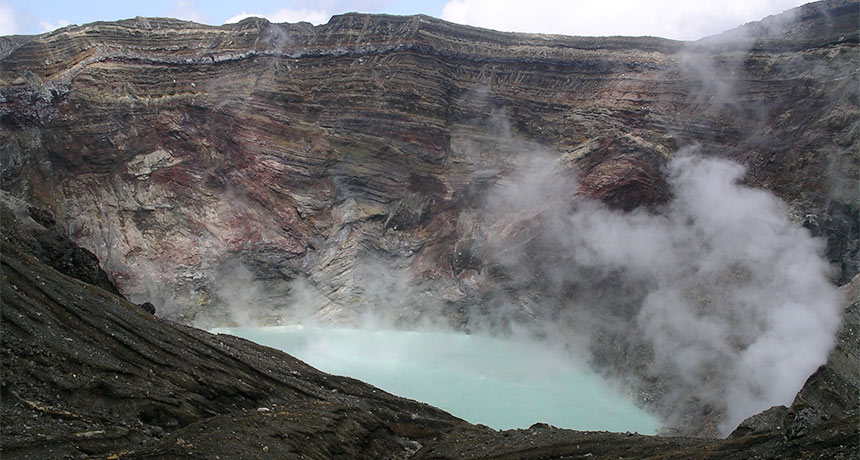There’s a new way to stop an earthquake: put a volcano in its path
One of the world’s largest active volcanoes stemmed a 7.1 temblor in Japan

EARTHQUAKE VS. VOLCANO The rupturing of a major earthquake in Japan was cut short by the magma chamber inside the Mount Aso volcano, new research suggests. Its steaming crater is shown above.
Bobo12345/Wikimedia Commons (CC BY-SA 3.0)






